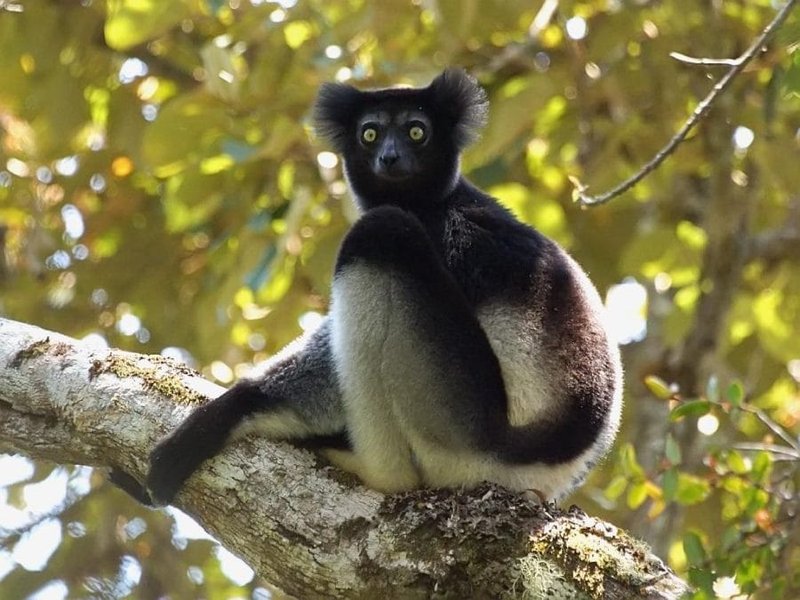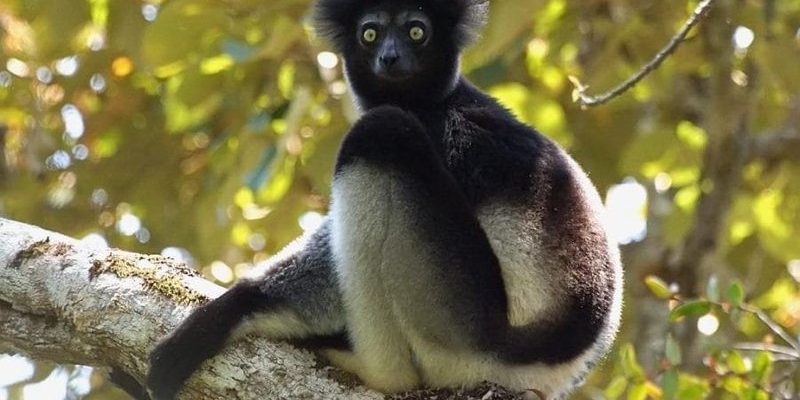
Indris are primarily *found in Madagascar*, an island known for its incredible biodiversity. But it’s not just about the location; it’s about the specific conditions they need to thrive. These animals are very particular about where they choose to call home, and their survival directly depends on the health of their habitats. So, let’s take a closer look at the unique homes of indris and what makes their environments special.
Madagascar: The Home of Indris
When we talk about where indris live, we’re really talking about Madagascar. This island, often dubbed the “eighth continent,” is home to a multitude of species found nowhere else on Earth. The indri is one of these species, thriving in the eastern rainforests of the island. These forests are not just any old trees; they’re dense, lush, and full of life.
Indris prefer the tall trees of these rainforests, which offer them ample food and a safe place to live. The leaves, seeds, and fruits of certain trees make up their diet, and they are especially fond of the leaves from the trees of the *Euphorbiaceae* family. Honestly, their choice of trees is a bit like us preferring our favorite restaurants—certain foods just hit the spot!
Forest Types Indris Prefer
Indris mainly inhabit two types of forests: rainforests and subhumid forests. Here’s a little more on each:
- Rainforests: These are where you find most indris. The warm, moist air helps various plants thrive, and the tall canopies form a home for these agile leapers. The forest floor is rich with nutrients, making it perfect for plant growth.
- Subhumid Forests: While slightly drier than rainforests, these areas still provide a home for indris. They can adapt to these somewhat different environments, but their survival is still closely linked to the trees and plants available.
Being true leaf-eaters, indris rely on diverse plant life, so a healthy forest means a healthy indri population!
The Importance of Habitat Quality
You might be wondering why the quality of their habitat is so crucial. Well, the truth is, habitat degradation due to human activities poses a significant threat to indris. Deforestation, logging, and agricultural expansion have led to the loss of their tree homes. Imagine if your favorite coffee shop suddenly closed down; you wouldn’t have a place to enjoy your drink anymore, right? That’s what’s happening to indris.
The loss of trees means fewer leaves for them to munch on and less cover from predators. This has a ripple effect, disrupting their social structures and decreasing their chances of survival. In short, protecting their habitat isn’t just about saving the trees; it’s about saving the indris themselves.
Conservation Efforts
Due to their vulnerable status, various conservation programs are working to protect indris and their habitats. Initiatives often involve educating local communities about the importance of these animals and promoting sustainable practices. This is where it gets exciting! For example, community-led reforestation projects not only provide new habitats for indris but also help restore the ecosystem.
By engaging locals, conservationists are ensuring that both people and wildlife can thrive together. After all, a healthy environment benefits everyone, not just the indris.
Distribution Across Madagascar
Now that we’ve talked about the type of habitat indris prefer, let’s break down where exactly on the island you’ll find them. Indris are primarily distributed in the eastern rainforests, stretching from Alaotra to Andasibe-Mantadia National Park.
- Andasibe-Mantadia National Park: This park is often considered the best place to see indris in the wild. With its well-preserved forests, it offers an ideal habitat for these animals to flourish.
- Alaotra: This region is another essential area for indri populations. The swampy marshlands near the lake provide unique conditions that support the local ecology, including the trees that indris love.
These specific locations highlight the importance of conservation efforts in regions where indris reside.
Challenges in Distribution
Despite their somewhat well-defined distribution, several challenges threaten the indri population. For one, the fragmentation of habitats has made it more challenging for them to find mates and food. This issue is similar to a well-loved band breaking up—they can still play music, but it’s not the same without everyone together.
Moreover, climate change poses additional threats. Changes in temperature and rainfall patterns can affect the growth of the trees that indris depend on. It’s a complicated web of interdependence, and every piece matters.
Behavior and Lifestyle in Their Habitat
Indris are fascinating not just because of where they live but also how they live. They’re known for their distinctive vocalizations, which can be heard for miles. These calls play a crucial role in their social structure, helping them communicate with group members and establish territory.
Living in family groups, typically consisting of a monogamous pair and their offspring, they spend much of their day moving through the trees in search of food. Their powerful legs are designed for leaping, enabling them to cover large distances in search of their favorite leaves.
The Role of Social Structure
In their tight-knit family groups, you’ll often find indris grooming each other and playing, which not only strengthens bonds but also helps keep fur clean from pests. This social behavior is essential for their mental health, making their lives in the forest more than just a daily struggle for survival; it’s a community experience.
Honestly, it’s a reminder that even in the wild, relationships matter. The way they interact with each other showcases their intelligence and social complexity—something that makes indris truly unique.
Final Thoughts on Indris and Their World
The indri’s story is one of beauty and struggle, intricately linked to the rich ecosystems of Madagascar. Understanding where indris live and how their habitats function is key to appreciating their existence.
As they leap through the trees, they remind us of the delicate balance of nature. Protecting their environments means protecting not just indris but also the vibrant communities that rely on these ecosystems.
In a world full of challenges, we can all play a part in conservation efforts, whether by supporting local initiatives or simply spreading awareness. Let’s keep the forests alive so that the indris can continue to call them home.

